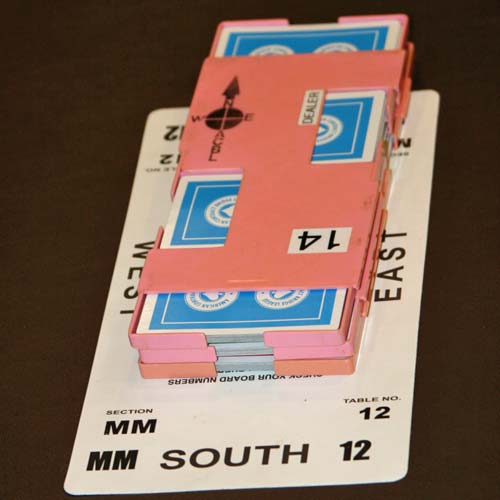
High Card Points (HCP) are an integral part to hand evaluation used for determining the overall strength, shape, fit and quality of the hand. The High Card Points helps players understand their relative hand strength. This information is important during bidding to arrive at an optimal contract.
High Card Points are part of the basic point-count method in which almost all Bridge players use to evaluate their relative hand value. The system is easy to learn and understand as it basically gives a set number of points to the high cards in your hand. The total High Card Points in your hand will give you a basic idea as to the strength of your hand and using this information you can now set out to bid accordingly.
The basis for the High Card Point system is that the higher the card, i.e. an ace, has a better chance at taking a trick than a lower card, i.e. a king. Therefore a king has a better chance at taking a trick than a queen, a queen a better chance than a jack, a jack a better chance than a ten and so on and so forth. The HCP system only counts Aces, Kings, Queens, and Jacks as points because these are the cards most likely to take tricks during the hand.
In the entire deck, their are a total of 40 High Card Points. So on average following the deal each hand will have 10 HCP. The actual amount of HCP each player receives can vary significantly, with some players possessing more HCP than average and others having less HCP than average. The system takes into account that each suit has 10 HCP and therefore a total of 40 HCP in every deck of cards.
The High Card Point distribution is as follows:
- Ace = 4 HCP
- King = 3 HCP
- Queen = 2 HCP
- Jack = 1 HCP
For example, a hand with A,A,Q,J,10,8,8,7,6,6,5,3,2 would have 11 HCP. The two aces are worth 4 points each, the queen is worth 2 points, and the Jack is worth one point (4+4+2+1=11).
Most bidding systems figure you need to have a better than average hand to open the bidding. Generally, a minimum of 12 HCP are needed to open the bid.
To reach an optimum contract, a pair needs to consider the total amount of HCP their team has so they may bid appropriately. Since you cannot directly tell your partner your HCP the information must be exchanged indirectly during the bidding. The combined HCP of the pair is a pretty good indication of the number of tricks that will be taken during the hand. The rule of thumb for the number of tricks made in a NT (no trump) game:
- 25 HCP = 3 NT
- 33 HCP = 6 NT
- 37 HCP = 7 NT
A Grand Slam, winning all the tricks, is a bid of 7 and if a partnership has at least 37 points then they must have all four aces. To have 33 HCP then the partnership must have at least 3 aces.
High Card Points are used by most players to help determine a good contract. However, HCP should only be a starting point to figure out the relative strength of a hand because HCP by themselves are insufficient in fully evaluating a hand. HCP is effective in No Trump bidding but loses some of its value when a trump is being bid and when hands are unbalanced. Because of this, distribution points and other factors can aid a pair in arriving at a optimum contract during the bid.
High Card Points is one of the first things you need to understand when playing contract Bridge. Being able to calculate the HCP for your hand is an essential first step, but the HCP alone is not enough to expertly evaluate your hand. During the bidding, each bid, pass, double or redouble by your partner or your opponents provides additional information. Knowing your HCP can help you continually reevaluate your hand during the auction. Adjustments to your relative hand strength in terms of High Card Points will be re-evaluated based on the hand shape, the location of honors, your hands fit with your partner’s hand, intermediate cards, control cards, unguarded honors, your partner’s suit length and your partner’s suit strength.
